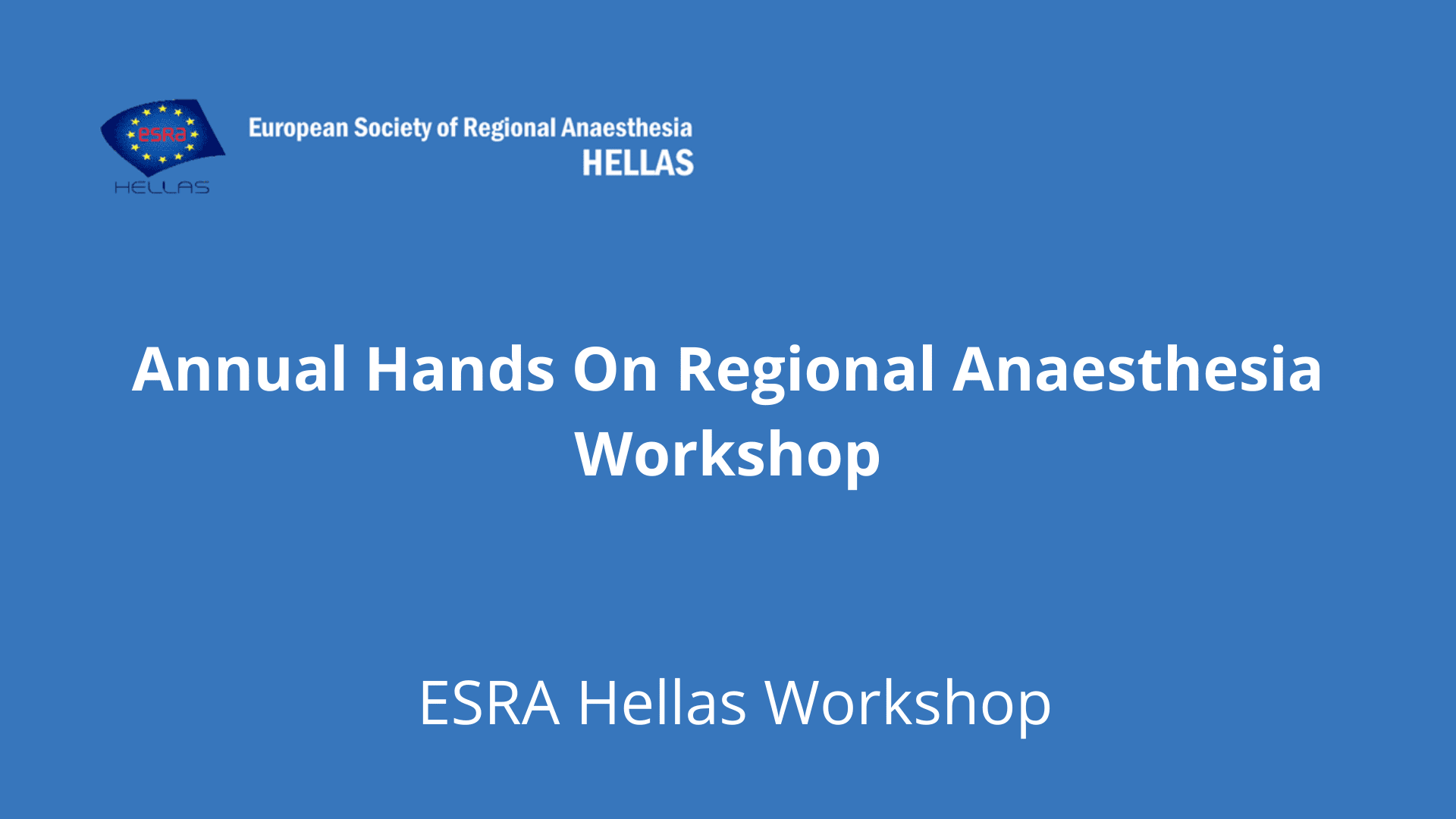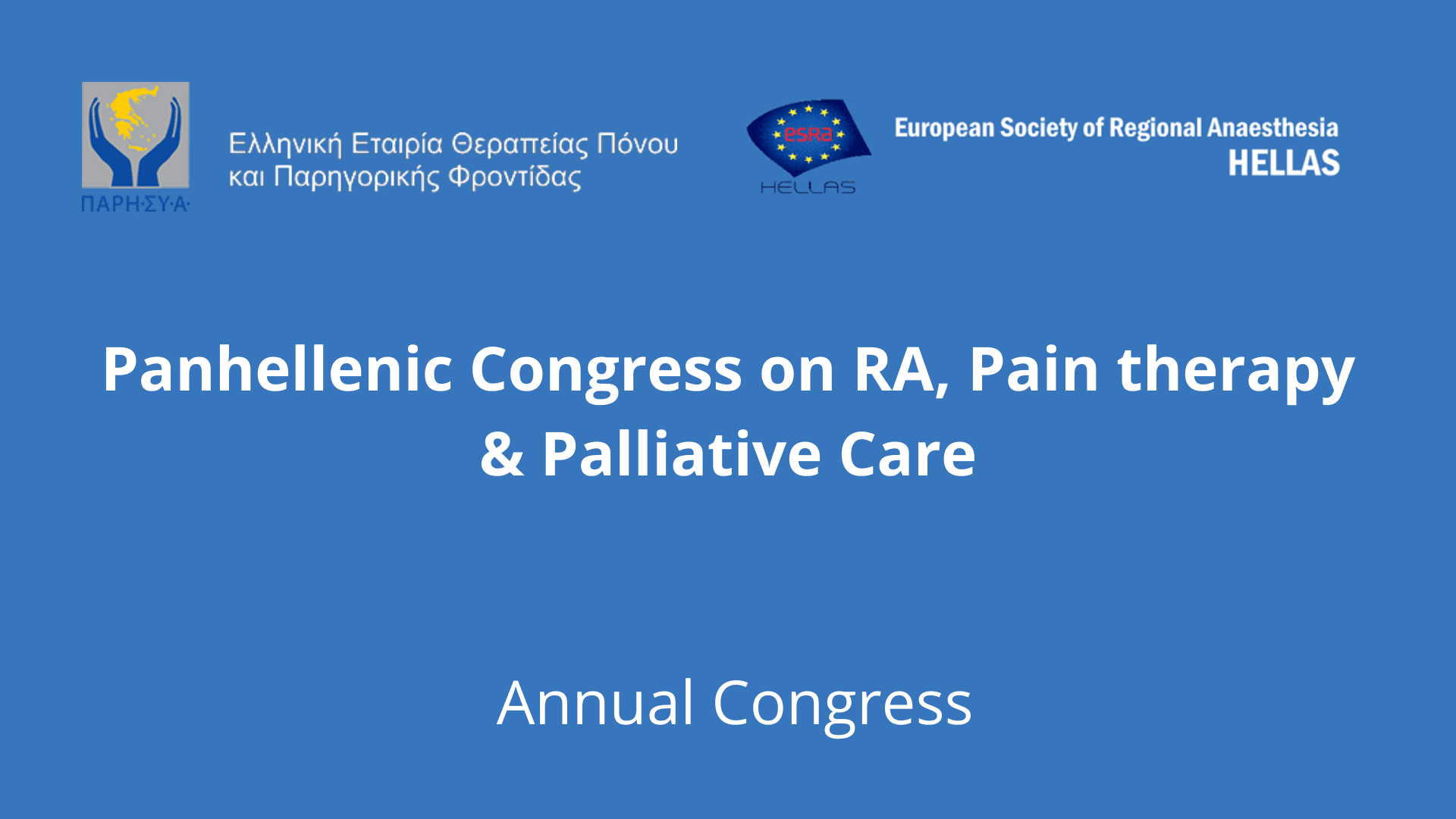EPIDURAL TECHNIQUE FOR POSTOPERATIVE ANALGESIA – CHANGING ROLE

ESRA Highlights
28th ESRA Annual Congress
September 9 – 12, 2009, Salzburg, Austria
Congress Highlights
EPIDURAL TECHNIQUE FOR POSTOPERATIVE ANALGESIA – CHANGING ROLE
Role in Fast – Track Major Abdominal Laparoscopic Surgery
Andre Van Zundert
Catharina Hospital – Brabant Medical School
Eindhoven – The Netherlands
For Full Text in pdf form click here.
Major abdominal surgery, but also emergency abdominal surgery (e.g. trauma, peritonitis) are still followed by a risk of morbidity, a need for hospitalization and convalescence and persisting postoperative pain for several days. Postoperative ileus and impaired bowel motility occurs almost universally following major open abdominal procedures. The causes of postoperative ileus are multifactorial. Some are surgical related and some are caused by pharmacologic interventions, mainly opioids.
We have to seek to improve ways to mitigate adverse side effects, which can be substantial and immensely uncomfortable for the patient. Overall hospitalization costs also increase if these kinds of operations are not straightforward. Complications do cost, not only financially, but also on the human aspect and therefore urges us to help to recover our patients as quickly as possible. Optimization of the peri-operative time a patient is in the hospital and prevention efforts are the responsibility of all team members, including surgeon, anesthesiologist, pre- and post care taker, respiratory therapists and nurses. Each patient should be get an individualized adaptation of the therapy needed for the specific surgical intervention, although certain general management considerations should be implied to the majority of patients.
Postoperative ileus is a normal response to the tissue injury that results from the surgical intervention, and might be categorized as an unavoidable consequence of surgery. Surgical manipulations (incisions, physical handling of viscera, blood loss) may lead to several mechanisms that can contribute to the development of postoperative ileus. These causes are of different nature: neurogenic (due to sympathetic hyperreactivity); inflammatory (cellular and humoral factors); and hormonal (corticotrophin-releasing factor play an important role in the modulation of endocrine, autonomic, behavioral and immune responses to stress). Other inflammatory mediators involved in the pathogenesis included calciton gene-related peptide, substance P, prostanoids, vasoactive intestinal peptide and nitric oxide. Overmanipulation of the gastro-intestinal tract and increased surgical stresscan lead to ileus of long duration. On the other hand, surgical interventions that are less invasive and of shorter duration, such as laparoscopic surgery, may be expected to lead to a shorter duration of postoperative ileus, and consequently improves outcome.
The pharmacologic cause of postoperative ileus is undoubtedly the use of opioids during postoperative pain management. Even endogenous opioids play a role, in conjunction with the plethora of other endogenous mediators and mechanisms of surgery itself. Not only the degree of surgical trauma and manipulation, but also the amount of opioid administered can affect the duration of postoperative ileus. Opioid receptors have a wide anatomic distribution and mediate different effects based on their location. Central opioid receptor binding results in the desired effects of analgesia and relief from pain. Unwanted side effects include e.g. sedation and respiratory depression. Peripheral opioid receptor binding in the gastro-intestinal tract interferes with normal mechanisms responsible for motility and secretion that include the actions of acetycholine, substance P and vasoactive intestinal peptide. Selectively blocking these gut opioid receptors may help reduce postoperative ileus, while preserving centrally mediated opioid analgesia. Peripheral acting mu-opioid receptor antagonists, the new class of agents, such as e.g. methylnaltrexone, can mitigate the adverse gastro-intestinal effects of opioids from both exogenous and endogenous origine. The impairment of bowel function and transit that occurs postoperative following abdominal surgery is only one aspect of the physiological adverse effects of postoperative ileus, which include also nausea and vomiting, increased postoperative pain, a delay in oral feeding, prolonged hospitalization, an increased use of human and material resources, and above all an increased burden for our patients.
It’s clear our patients deserve better treatment. Postoperative ileus can represent an undue hardship to many patients severely diminishing the quality of life. We therefore need to prevent or reduce the duration of postoperative ileus, which should be considered an undesirable stress response to major abdominal surgery that leads to discomfort, morbidity and prolonged hospital stay.
Surgical options include a variety of therapies (Table 2), of which the less invasive surgical technique (laparoscopy) includes diminished pain, faster recovery and return to work, faster return of gastro-intestinal function, shorter length of stay in the hospital, and fewer long-term complications. Early feeding of the patient results in amelioration of the stress response to surgery (lower nitrogen losses, lower urine catecholamines, better albumin synthesis, improved muscle strength, accelerated healing, decreased infection rates, and earlier flatus and stool). As many as 80 to 90% of the patients tolerate early feeding despite absence of bowel sounds, flatus or stool. This has been proven for a variety of abdominal surgery (gastrectomy, colonic surgery, gynecologic surgery, urologic interventions).
Pain relief undoubtedly is important. Most studies show that thoracic epidural anesthesia does help to reduce the incidence of postoperative ileus. A recent Cochrane review concluded that epidural local anesthetic reduced the time to recovery from postoperative ileus by 1.5 days when compared with systemic opioids, and reduced the duration of postoperative ileus by 24 hours compared with epidural opioids. This may be due to the fact that epidural anesthetics inhibit sympathetic nervous system activity, which is partly responsible for inhibiting motility. Epidurals also attenuate the stress response, and show less postoperative complications (e.g. less pulmonary complications), facilitate mobility, improve pain control, including blocking afferent input form the wound site. Epidurals however, do not reduce the risks of leakage or blood loss. Epidural catheters have their problems too (dislodging, blocking, leakage). Therefore an expert placement of epidural catheter placement, and regular control and follow-up is of paramount importance.
In conclusion, postoperative ileus is a transient cessation of the coordinated bowel function after surgery, and is an important health care problem for patients undergoing abdominal surgery. The etiology is related to both the surgical and anesthetic pathways chosen. The multimodal therapeutic concept of fast-track surgery is directed against the pathophysiologic functional changes following abdominal surgery. This benefit is based on an interdisciplinary approach by surgeons, anesthesiologists, nurses and physiotherapy staff to optimize perioperative care in order to decrease surgically-induced stress. Fast-track surgery has been shown to reduce the rate of postoperative complications and shorten hospital stay significantly. A prerequisite for successfully implementing this concept is the willingness of all involved to abandon conventional traditions. Further improvement is expected by integration of minimal invasive surgery, pharmacological stress-reduction, and effective multimodal, non-opioid analgesia.
References
1. Kraft MD. Emerging pharmacologic options for treating postoperative ileus. Am J Health-Sys Pharm. 2007;64:S13-S20.
2. Viscusi ER, Gan TJ, Leslie JB, Foss JF, Talon MD, Du W, Owens G. Peripherally acting mu-opioid receptor antagonists and postoperative ileus: Mechanisms of action and clinical applicability. Anesth Analg. 2009;109:1811-1822.
3. Kehlet H, Dahl JB. Anaesthesia, surgery and challenges for postoperative recovery. Lancet. 362:1921-1928.
4. Werawatganon T, Charuluxananan S. Patient controlled intravenous opioid analgesia versus continuous epidural analgesia for pain after intra-abdominal surgery. Cochrane Database of Systematic Reviews. 2009, Issue 2.
5. Holte K, Foss NB, Andersen J, Valentiner L, Lund C, Bie P, Kehlet H. Liberal or restrictive fluid administration in fast-track colonic surgery: a randomized double-blind study. Br J Anaesth. 2007;99:500-508.
6. Saeki H, Ishimura H, Higashi H, Kitagawa D, Tanaka J, Maruyama R, et al. Postoperative management using intensive patient-controlled epidural analgesia and early rehabilitation after esophagectomy. Surg Today. 2009;39:476-480.
7. Rodgers A. Walker N, Schug S, McKee A, Kehlet H, van Zundert A, et al. Reduction of postoperative mortality and morbidity with epidural or spinal anaesthesia: results from overview of randomized trials. BMJ. 2000;321:1493-1497.
Table 1.
Impact of Postoperative Ileus following Abdominal Surgery
- increased risk of severe postoperative pain
- increased risk of nausea and vomiting
- increased risk of aspiration
- increased risk for naasogastric tube
- increased delay to oral intake and normal regular diet
- increased risk of malnutrition and consequently a catabolic metabolism
- increased risk of delayed wound healing
- increased risk of delayed mobilization
- increased risk of pulmonary complications
- increased risk of prolonged hospitalization
- increased risk of spending more health care costs
(additional nursing time, more hospital stays, more lab tests, more iv hydration, more complications)
Table 2.
Techniques used to prevent postoperative ileus
- fast track surgery = multimodal postoperative rehabilitation
- laparoscopic surgery
- thoracic epidural anesthesia
- incisional local anesthetics
- opioid sparing medications
- peripherally acting mu – opioid receptor antagonists
- laxatives
- chewing gum
- avoidance of routine nasogastric tube and fluid excess
- early institution of oral feeding






